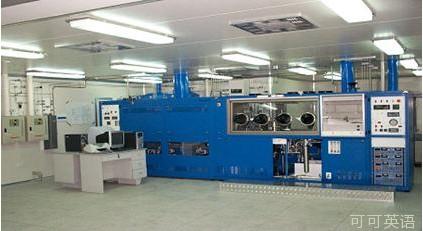(单词翻译:单击)

Science and Technology Materials science Cracking a problem
科技 材料科学 通过裂纹解决问题
Another use for a fashionable, new material
一种流行新材料的新用途
LIKE all other human activities, science is subject to fads.
像其它人类活动一样,科学是一个时尚主题。
One of the latest is for graphene.
最新的话题是关于石墨烯的。
This wonder material—a form of carbon that comes in films a single atomic layer thick—won Andre Geim and Konstantin Novoselov the Nobel prize for physics last year.
作为碳的一种形式,这种源自胶带操作的奇妙材料只有单原子层厚度,发明者安德烈·杰姆和克斯特亚·诺沃塞洛夫为此获得了去年的诺贝尔物理学奖。
Because of its unusual electrical properties it has been touted as a way of making everything from touch screens to solar cells.
由于石墨烯非同寻常的电特性,它被吹嘘为制造一切产品的新途径--从触摸屏到太阳能电池。
Now a humbler use is being proposed.
如今石墨烯的一种低层次应用被提出来。
Another of graphene's qualities is that it is strong. That, suggests Erica Corral of the University of Arizona, makes it ideal for reinforcing ceramics.
它的另一特性是机械强度高,因而被亚利桑那大学的埃里卡·科拉尔视为加强陶瓷材料硬度的一种理想材料。
Engineers like ceramics because they can be heated without melting. Unlike metals and plastics, though, they are brittle.
工程师喜欢陶瓷材料,因为它们加热时不会融化,这点不像金属和塑料,尽管它们是脆的。
Because they crack easily, using them in places that are exposed to a lot of physical punishment is difficult.
因为陶瓷材料易碎,因此将其用于高物理强度的场合非常困难。
But a paper just published in the American Chemical Society's journal, Nano, by Dr Corral and her colleagues, suggests a sprinkling of graphene may deal with that.
但在美国化学协会杂志刚发表的一篇论文《纳米》中,科拉尔博士和她的同事们认为,加入少许石墨烯也许就能解决这个问题。
The ceramic they experimented with was silicon nitride, a material much admired in the aerospace industry.
她们测试的陶瓷材料是氮化硅--一种在太空工业中饱受赞誉的材料。
Components are made by sintering it in powder form in a mould, at 1,000oC, for several hours.
这些部件是将氮化硅粉末置于模具中,处于1000摄氏度高温下烧制数小时而成。
Unfortunately, graphene disintegrates above 600oC, so the team had to think of a clever way of mixing the two materials.
不幸的是,温度高于600摄氏度,石墨烯就碎裂,因此研究团队必须想出一种巧妙办法将两种材料融合在一起。
Their solution was to take advantage of graphene's electrical conductivity, by running a current through the mixture. This generated a temperature of 1,650oC—more than enough to sinter the silicon nitride.
解决办法就是利用石墨烯的导电特性,将电流通过混合物,产生的1650摄氏度的高温足以烧结氮化硅,而石墨烯也没有碎裂。
The graphene, however, did not break down.
其原理尚未完全弄清楚。
Why, is not entirely clear. But rapid electrical heating did not seem to affect it in the way that slower oven heating would.
但与通过熔炉缓慢加热不同,快速电加热对石墨烯看起来没有什么影响。
The result was a composite that was able to withstand twice as much pressure as unalloyed silicon nitride.
和纯氮化硅相比,其合成物能经受的压力强度翻倍。
When the team examined what they had done under a microscope, they found that the graphene had wrapped itself around the silicon-nitride grains, forming continuous walls.
当研究团队在显微镜下观察合成物时,他们发现石墨烯包裹在氮化硅颗粒周围,形成了连续的"壁"。
When they looked at samples that they had whacked hard enough to come close to cracking, they found that these walls were encouraging the cracks to spread in three dimensions—in contrast with the two-dimensional pattern usually seen in silicon nitride.
当检查这些不断敲击而近乎开裂的样品时,他们发现这些"壁"有助于裂纹向三个维度上延伸,和通常在氮化硅上观察到的"二维裂解模式"形成了对比。
Dr Corral suspects that extending cracking into the third dimension dissipates the energy faster and stops the fault spreading.
科拉尔博士推测,那种裂纹扩展为三个维度使能量扩散的更快,同时制止了缺陷的扩展。
A cracking idea, as it were.
通过三维裂纹来增强陶瓷材料强度,真是一个绝妙的点子!


